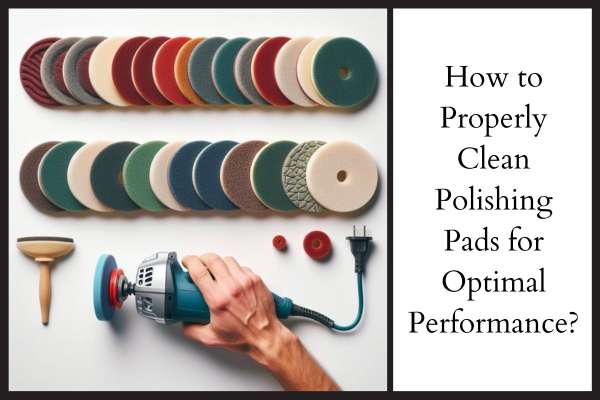
Feb 15,2024
If you're passionate about car detailing or woodworking, you understand the importance of maintaining your tools in top-notch condition. Polishing pads, a critical component in achieving a flawless finish, require special attention to ensure longevity and optimal performance. This comprehensive guide delves into the ins and outs of cleaning polishing pads correctly, ensuring that your next project shines brighter than ever.
Before delving into the cleaning process, it's crucial to understand why clean polishing pads are indispensable for quality results. When pads are laden with old compounds and residues, they not only compromise the surface finish but also hinder the pad's ability to distribute polish or wax evenly.
Dirty pads can lead to streaks, swirls, and uneven surfaces, diminishing the professional quality of your work. Regularly cleaning your polishing pads preserves their lifespan and ensures consistent, high-quality results on every project.
To initiate the cleaning process, assemble the necessary cleaning supplies. A bucket, mild detergent, a soft brush, and a specialized pad cleaning solution are essential. Opt for a gentle detergent to avoid damage to the delicate fibers of the polishing pads.
Having all your supplies ready beforehand streamlines the cleaning process, allowing you to focus on restoring your pads to their optimal condition.
Start the cleaning process by conducting a thorough pre-cleaning inspection of your polishing pads. Remove loose debris, such as dust, dried compounds, or leftover polish, gently tapping or brushing. This step prevents these particles from embedding deeper into the pad during the subsequent cleaning.
By inspecting and removing surface contaminants, you set the stage for a more effective and efficient cleaning process.
Once your pads are free from surface debris, it's time to soak them in warm, soapy water. Fill the bucket with water and add a small amount of mild detergent. Submerge the polishing pads and allow them to soak for 10-15 minutes. This step softens any remaining compounds and prepares the pads for a thorough cleaning.
The warm, soapy water aids in breaking down stubborn residues, making the subsequent cleaning steps more effective.
After the soaking process, take a soft brush and gently scrub the surface of the polishing pads. Use circular motions to dislodge any residues clinging to the fibers. It's essential to strike a balance – apply enough pressure to remove stubborn particles but avoid excessive force that could damage the delicate structure of the pads.
This step ensures a deeper clean, effectively removing any remaining compounds and contaminants.
Following the brushing process, rinse the polishing pads thoroughly under running water. Ensure that all detergent and debris are completely washed away. This meticulous rinsing step is crucial to prevent any chemical residue from affecting the outcome of your next project.
Thorough rinsing guarantees that your pads are free from any potential contaminants, preserving the integrity of your work.
Post-rinse, inspect the polishing pads again for any lingering contaminants. If you identify any spots or residues, repeat the soaking and brushing process until the pads are entirely clean. This attention to detail ensures that your pads are ready for optimal performance in your next project.
Regular inspection and, if necessary, re-cleaning are essential steps to guarantee consistently excellent results.
After thoroughly cleaning, allow the polishing pads to air dry completely before storing or using them again. Placing damp pads on your polishing machine can lead to mold growth and decreased effectiveness.
Complete drying is crucial for maintaining the longevity of your pads and preventing any potential issues related to moisture.
Make polishing pad cleaning a regular part of your maintenance routine. This practice ensures that your pads consistently deliver outstanding results and prolong their lifespan. Set a schedule for cleaning, depending on the frequency of use, to maintain peak performance.
Incorporating pad cleaning into your regular maintenance routine is a proactive approach to ensuring the longevity of your tools and the quality of your work.
Consider investing in dedicated pad cleaning solutions for stubborn stains or specialized applications. These products are formulated to break down specific contaminants without compromising the integrity of the pad material.
Specialized cleaning products can be a valuable addition to your toolkit, offering targeted solutions for challenging cleaning scenarios without causing any harm to your polishing pads.
In conclusion, the meticulous cleaning of polishing pads is not just a task but a necessity for achieving professional-grade results in your detailing or woodworking projects. By understanding the importance of clean pads, using the right supplies, and following a systematic cleaning process, you ensure that each project shines with the brilliance it deserves. Make cleaning a regular part of your maintenance routine, and watch your polishing pads become a reliable ally in your quest for perfection.